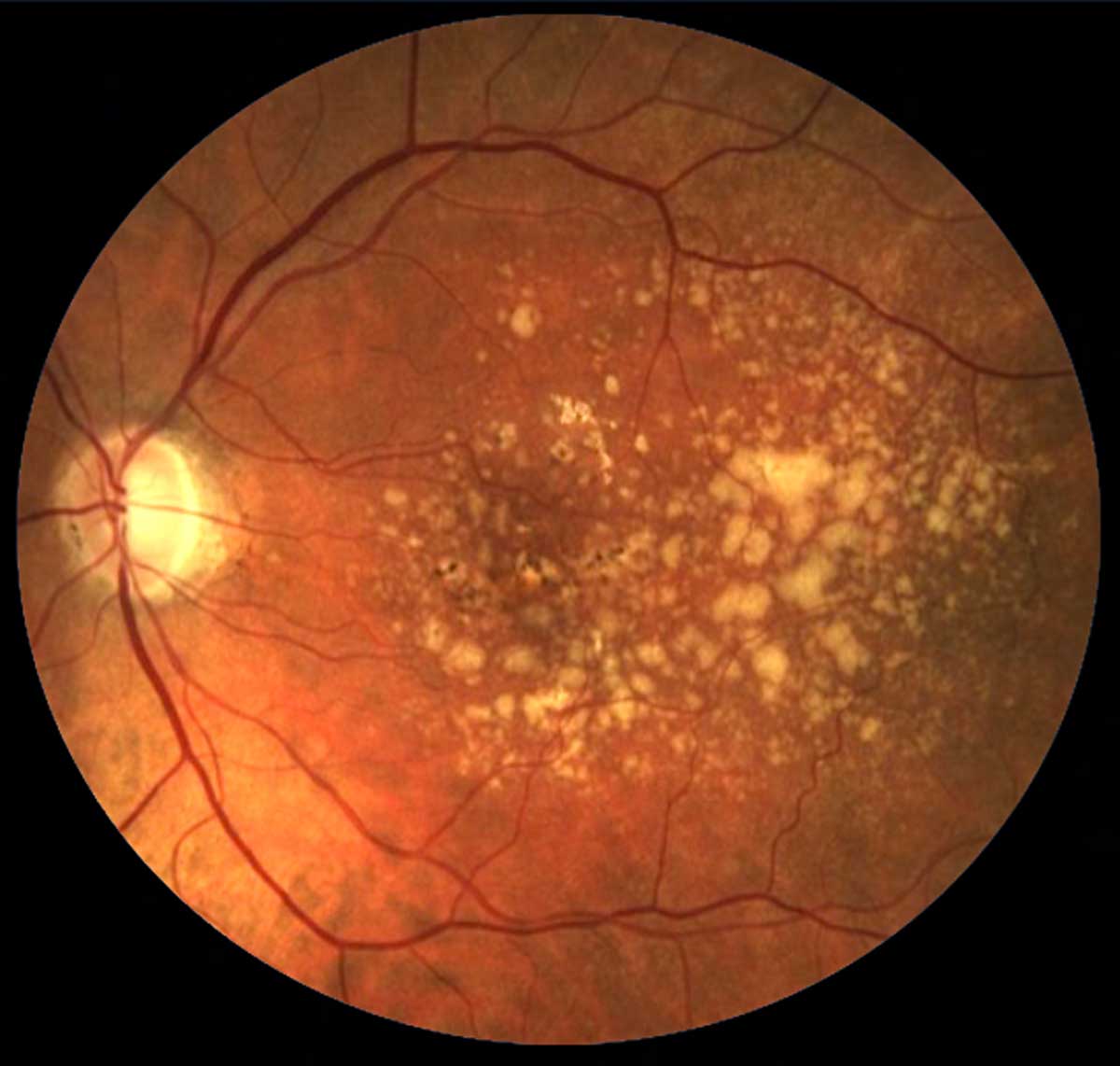 |
| In cases of concurrent amblyopia and AMD, research shows that the amblyopic eye is typically less affected by AMD, though the mechanism behind this observation is unclear. Photo: NEI. Click image to enlarge. |
Age-related macular degeneration (AMD) typically affects both eyes, but for patients who also have amblyopia, literature suggests that the latter condition might protect against AMD’s development in the amblyopic eye. Researchers recently investigated this finding further by reviewing a large patient database. They found that individuals with less amblyopia tended to be diagnosed with AMD on the amblyopic eye, while in cases of lateral asymmetry, the non-amblyopic eye was more likely to have more advanced AMD.
After reviewing the medical records of 5,284 patients with amblyopia and 16,236 patients with AMD, the team reported that 2.6% of those with unilateral amblyopia also had AMD in the same eye, while 4.3% had AMD in the non-amblyopic eye. AMD in both eyes was detected in closer to 1% of amblyopic patients. Regarding bilateral amblyopia, only three of 233 affected patients had concomitant AMD, two of which had more advanced disease in the eye with better visual acuity.
The research team also identified 163 patients from the database who had both of the following: AMD diagnosed on one side and unilateral amblyopia. Of these, they determined that 126 patients had the conditions in opposite eyes, while 37 had AMD and amblyopia on the same side.
The researchers wrote in their paper on the findings, published in the American Journal of Ophthalmology, that while amblyopic eyes showed milder forms of AMD, “the mechanisms behind this observation remain elusive.” They did present several possible explanations from previous research, including from one study conducted on monkeys which found that strabismus led to a reduced metabolic activity in the visual cortex. “Thus, amblyopia may also lead to a reduced metabolic activity in the retina, causing less accumulation of degradation material like lipofuscin, which would otherwise contribute to AMD pathogenesis by oxidative stress-induced damage to the retinal pigment epithelium,” the authors explained.
Another prior study investigated visual function recovery in amblyopic eyes after the loss of the fellow eye due to AMD, finding that “out of 10 patients, all but one had AMD in the eye without amblyopia and the authors concluded that there is a possibility that the amblyopic eye may be protected from AMD,” the researchers of the present study reported. “The other option is that patients with amblyopia do not notice AMD when it affects the amblyopic eye and therefore do not seek help,” they added.
While current evidence provides a convincing argument for the protective effect of amblyopia on the development of AMD, the authors concluded that further research on the topic is still needed to investigate the reasoning behind the observation.
Grosspoetzl M, Kloeckl L, Guttmann A, et al. Protective effect of amblyopia on age-related macular degeneration. Am J Ophthalmol. July 6, 2023. [Epub ahead of print]. |

